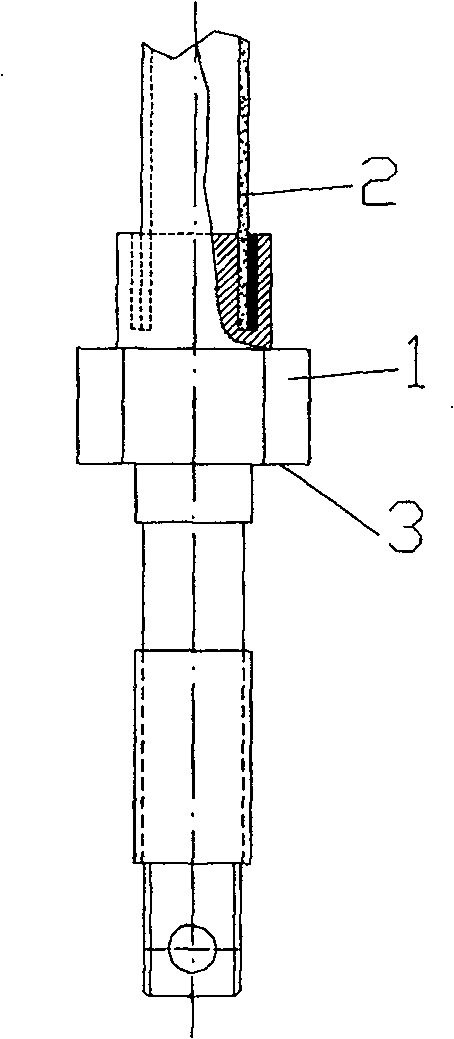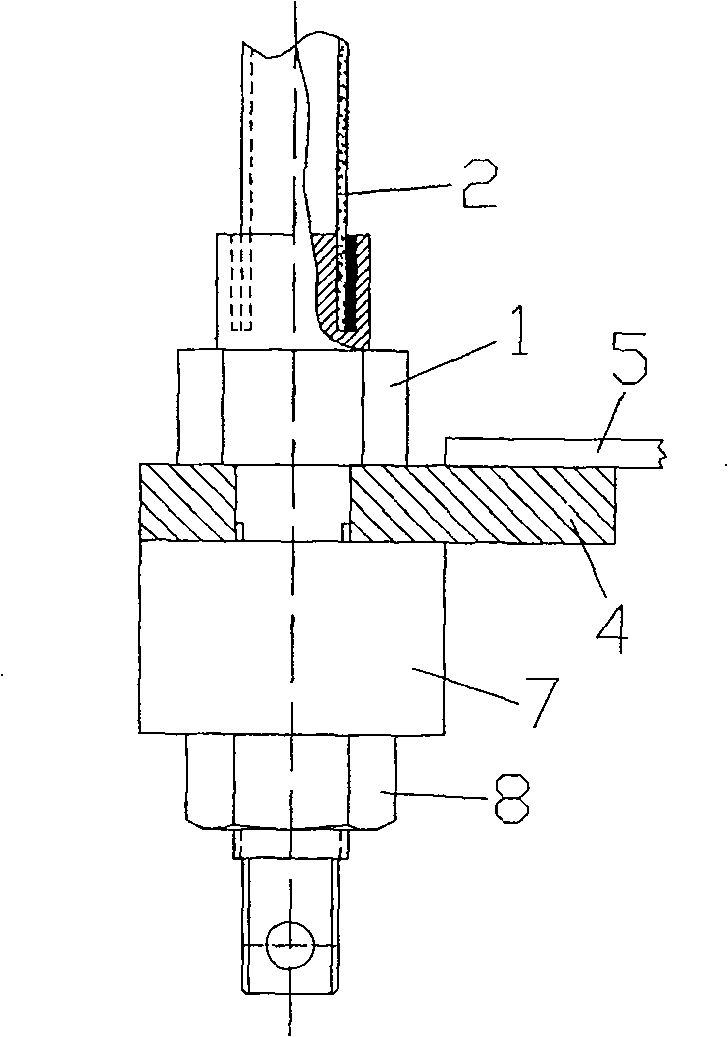Superconductive current lead welding method
A lead welding, superconducting current technology, applied in welding equipment, metal processing equipment, manufacturing tools, etc., can solve the problems of remelting and loosening of solder, and achieve the effect of reducing the chance of heating, low temperature and easy operation.
- Summary
- Abstract
- Description
- Claims
- Application Information
AI Technical Summary
Problems solved by technology
Method used
Image
Examples
Embodiment Construction
[0013] The present invention will be further described below in conjunction with the accompanying drawings and specific embodiments.
[0014] as in Figure 1a As shown, the copper column 1 is first soldered with the tubular high-temperature superconductor 2 by tin brazing, and at the same time, the solder is hung on the plane 3 of the copper column 1 . Such as Figure 1b As shown, the copper block 4 is first soldered with tin brazing with the lead-out wire 5 of the superconducting magnet, and at the same time, the solder is hung on the plane 6 of the copper block 4, and the area to be welded from the plane 6 is covered with cloth while it is hot, i.e. Figure 1b Shaded area shown, quickly wipe to remove excess solder on this area.
[0015] exist figure 2 In the process, the copper pillar 1 and the high-temperature superconductor 2 that have been welded together are put on a lathe to turn the solder layer on the plane 3 until only a thin layer of solder remains on the plane ...
PUM
 Login to View More
Login to View More Abstract
Description
Claims
Application Information
 Login to View More
Login to View More - R&D
- Intellectual Property
- Life Sciences
- Materials
- Tech Scout
- Unparalleled Data Quality
- Higher Quality Content
- 60% Fewer Hallucinations
Browse by: Latest US Patents, China's latest patents, Technical Efficacy Thesaurus, Application Domain, Technology Topic, Popular Technical Reports.
© 2025 PatSnap. All rights reserved.Legal|Privacy policy|Modern Slavery Act Transparency Statement|Sitemap|About US| Contact US: help@patsnap.com



